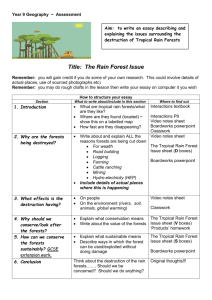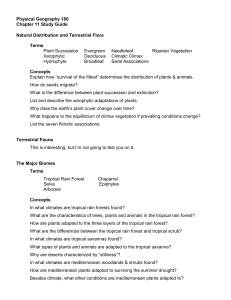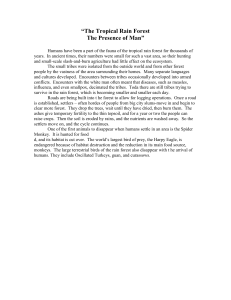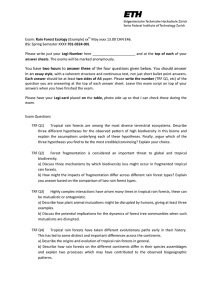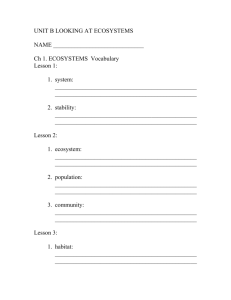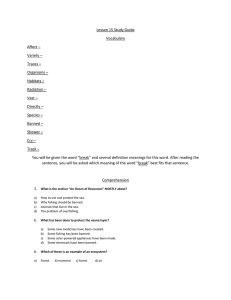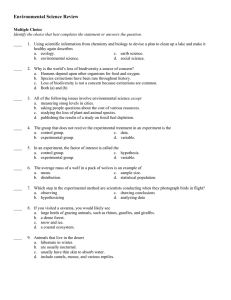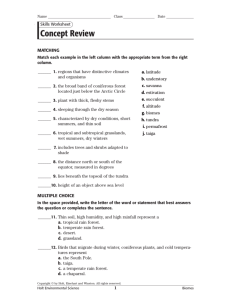Exam 3 questions
advertisement
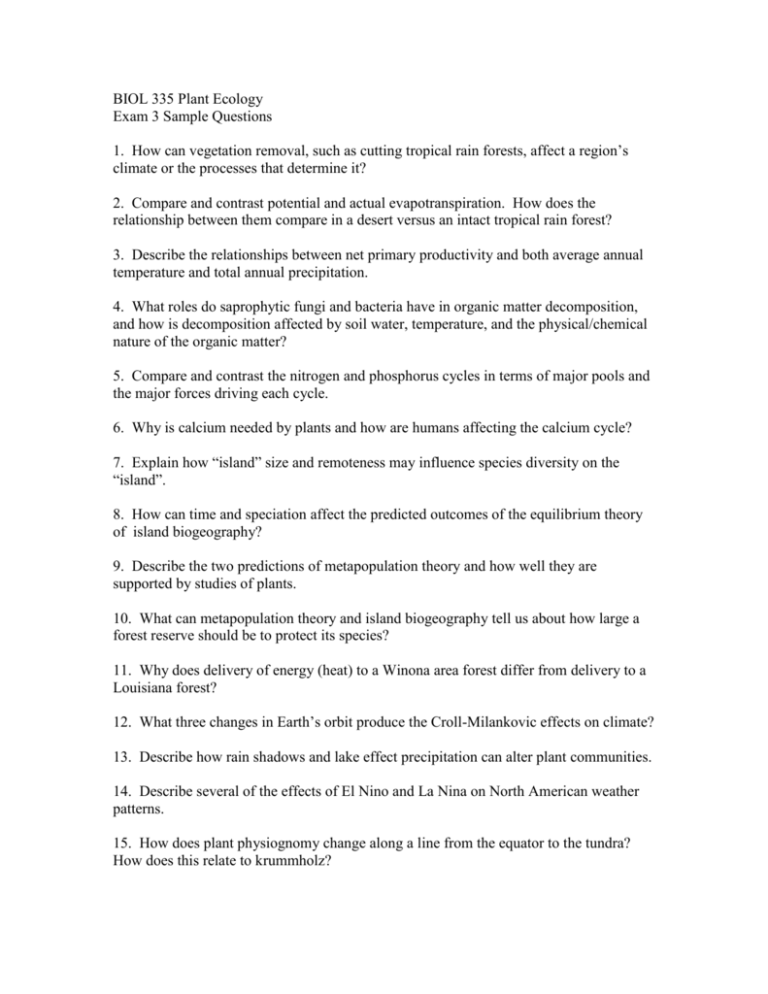
BIOL 335 Plant Ecology Exam 3 Sample Questions 1. How can vegetation removal, such as cutting tropical rain forests, affect a region’s climate or the processes that determine it? 2. Compare and contrast potential and actual evapotranspiration. How does the relationship between them compare in a desert versus an intact tropical rain forest? 3. Describe the relationships between net primary productivity and both average annual temperature and total annual precipitation. 4. What roles do saprophytic fungi and bacteria have in organic matter decomposition, and how is decomposition affected by soil water, temperature, and the physical/chemical nature of the organic matter? 5. Compare and contrast the nitrogen and phosphorus cycles in terms of major pools and the major forces driving each cycle. 6. Why is calcium needed by plants and how are humans affecting the calcium cycle? 7. Explain how “island” size and remoteness may influence species diversity on the “island”. 8. How can time and speciation affect the predicted outcomes of the equilibrium theory of island biogeography? 9. Describe the two predictions of metapopulation theory and how well they are supported by studies of plants. 10. What can metapopulation theory and island biogeography tell us about how large a forest reserve should be to protect its species? 11. Why does delivery of energy (heat) to a Winona area forest differ from delivery to a Louisiana forest? 12. What three changes in Earth’s orbit produce the Croll-Milankovic effects on climate? 13. Describe how rain shadows and lake effect precipitation can alter plant communities. 14. Describe several of the effects of El Nino and La Nina on North American weather patterns. 15. How does plant physiognomy change along a line from the equator to the tundra? How does this relate to krummholz? 16. What forces influence the change from short-grass prairies in Colorado to deciduous forests in Ohio? 17. Compare and contrast desert plants that are drought evaders and drought resistors. 18. Compare tropical savannas, temperate grasslands, and tundra in terms of climate and vegetation. 19. Describe three different types of tropical forests. 20. Describe why a pine tree is better suited than an oak tree for life in the taiga. 21. How did declining CO2 concentrations 250-65 million years ago affect plant development and evolution? 22. What are plant microfossils and macrofossils, and how can ecologists use them to study long-term changes in plant communities? Provide an example. 23. How does acid rain impact soil minerals and plant uptake? 24. How does acid rain affect mosses, and how can these, in turn, affect forest trees? 25. Explain how rising atmospheric CO2 concentrations may eventually cause problems with the survival of sugar maple trees in Canada. 26. What are biodiversity hotspots and why are they important to plant conservation efforts? Use Madagascar as an example. 27. Is Brazil nut harvest sustainable? Explain your answer. 28. Contrast the effects of overgrazing by cattle on a dry grassland community versus overbrowsing by deer in a Minnesota forest.




